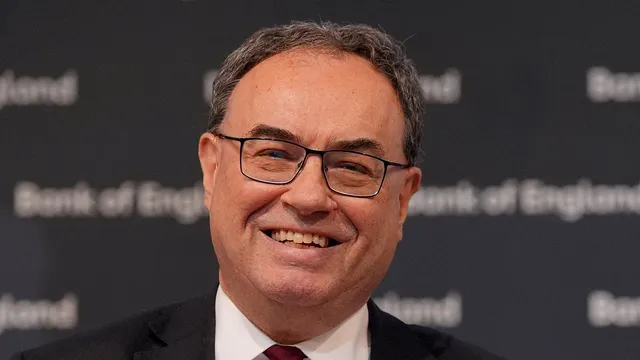
Bank of England's Bailey emphasizes gradual rate cuts amid low inflation
2024-09-27 21:50- Inflation rates in France and Spain have decreased to 1.5% and 1.7%, respectively, while US inflation is at 2.2%.
- The Bank of England has only cut interest rates by a quarter point, contrasting with more aggressive cuts by the European Central Bank and the US Federal Reserve.
- Experts warn that the Bank's cautious approach may hinder economic growth and that quicker rate cuts are necessary to support small businesses and mortgage holders.
Express your sentiment!
Insights
The Bank of England is facing pressure to reduce interest rates as inflation rates in Europe and the US have fallen significantly. Recent data shows that inflation in France and Spain dropped to 1.5% and 1.7%, respectively, while the US personal consumption expenditure inflation fell to 2.2%. In contrast, the Bank of England has been more cautious, only cutting rates by a quarter point last month, despite inflation nearing 2%. Governor Andrew Bailey emphasized that any rate reductions will occur gradually. This cautious approach has led to a stronger pound against the euro and dollar, but it has raised concerns among mortgage holders and small businesses. The Federation of Small Businesses highlighted that high finance costs are hindering growth and investment, urging for a more aggressive rate cut strategy to stimulate the economy. Experts warn that delaying further cuts could result in the Bank falling behind its counterparts in Europe and the US, potentially exacerbating economic challenges.
Contexts
In a significant move, the Federal Reserve recently cut interest rates, a decision that has been met with relief by small business owners across the nation. According to the latest CNBC and SurveyMonkey Small Business Survey, many owners are optimistic that lower interest rates will enable them to increase investments, expand their operations, and boost inventory levels. This sentiment marks a notable shift, as one in three small business owners now believe that inflation has peaked, a rise from the previous quarter's figures. However, concerns about costs still loom large in the small business community. The impact of high interest rates has been felt acutely by small businesses over the past few years, with many owners grappling with the rising costs of borrowing. As the Fed's rate hikes pushed borrowing costs to their highest levels in over two decades, many business owners delayed taking out loans, stifling growth opportunities. Despite these challenges, a recent NerdWallet survey revealed that 67% of small business owners still plan to seek funding in the coming year, driven by hopes of falling rates. With the recent rate cut, the landscape is changing. Lower borrowing costs are expected to stimulate economic activity, allowing businesses to invest in growth initiatives, hire more staff, and enhance their competitive edge. Holly Wade, director of the NFIB's Research Center, emphasized that this could help small businesses manage wage pressures and other cost challenges more effectively. As the Federal Reserve continues to navigate the delicate balance between stimulating growth and controlling inflation, the upcoming meetings in November and December will be crucial. Business owners are watching closely, hopeful that the trend of lower interest rates will persist, paving the way for a more robust economic recovery.